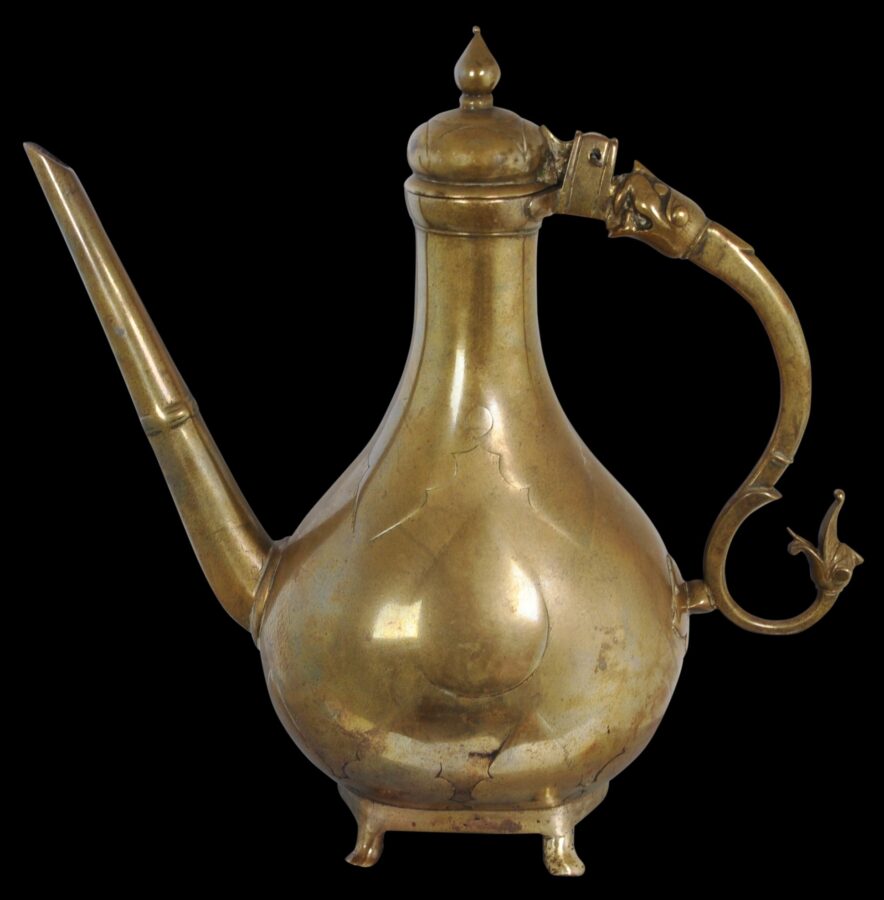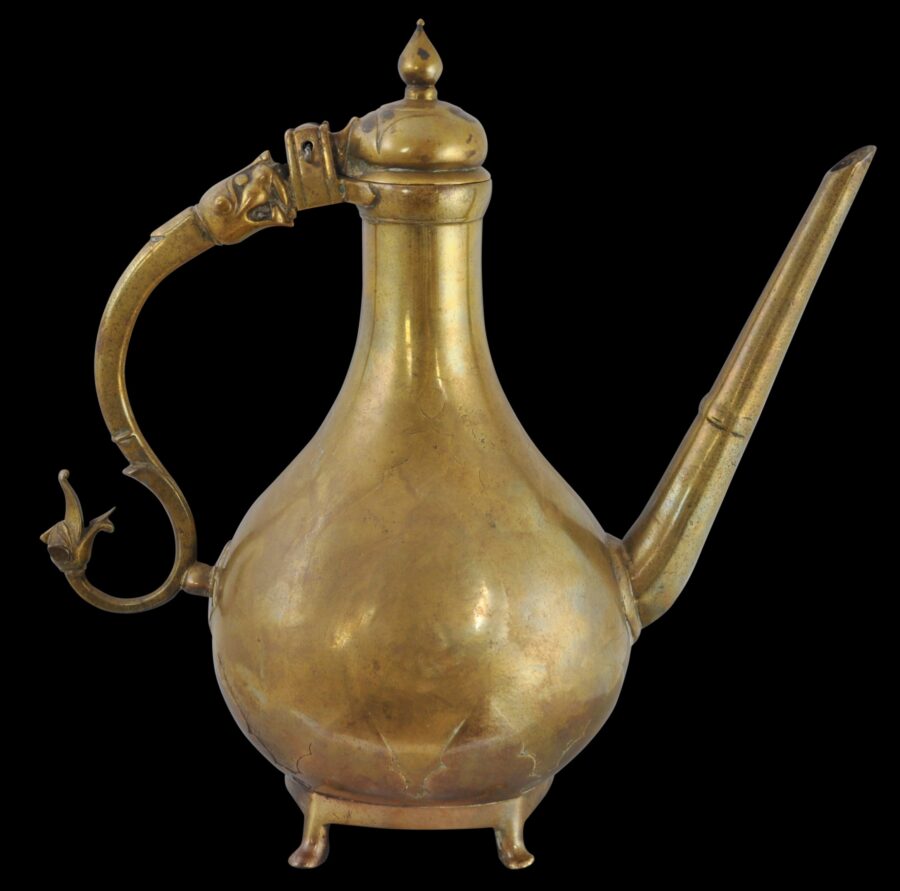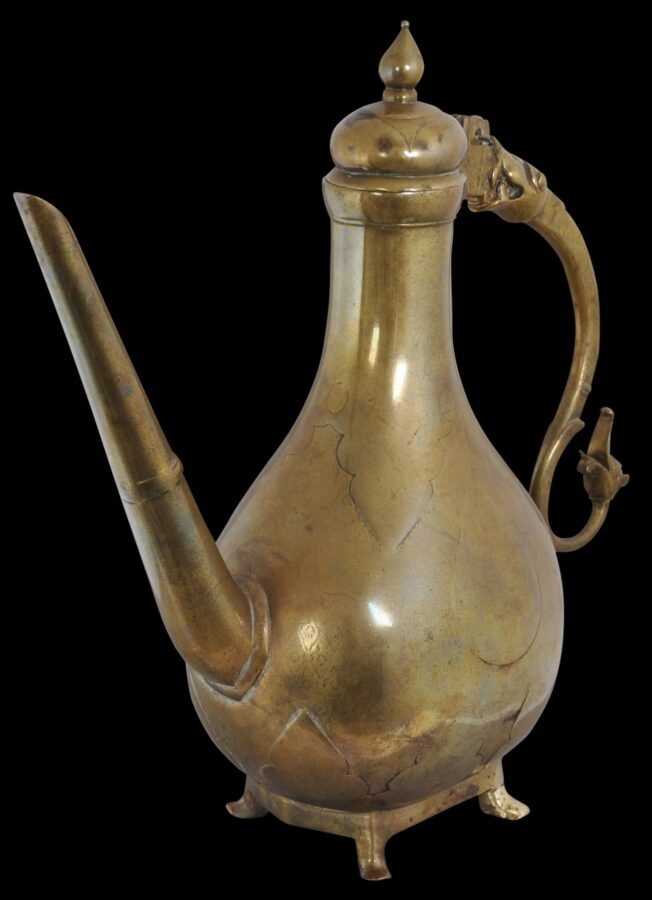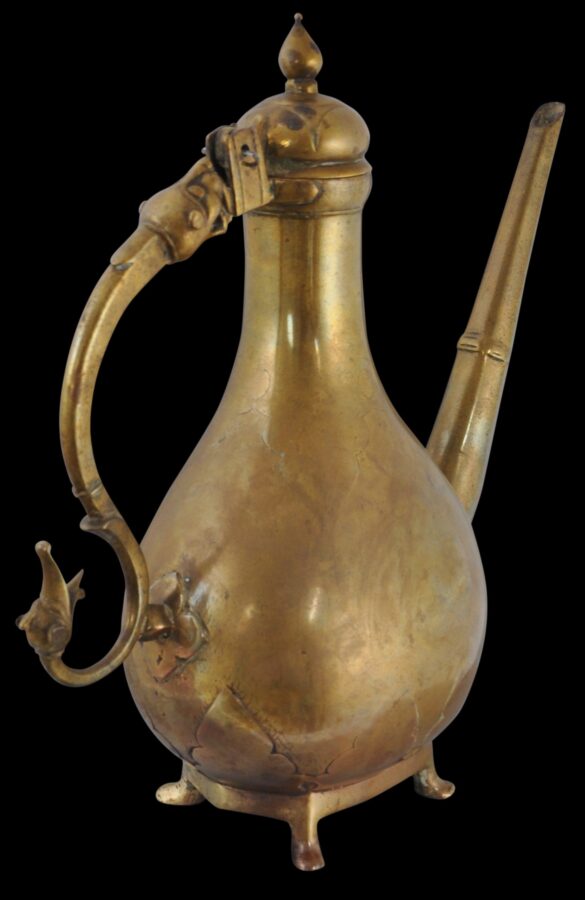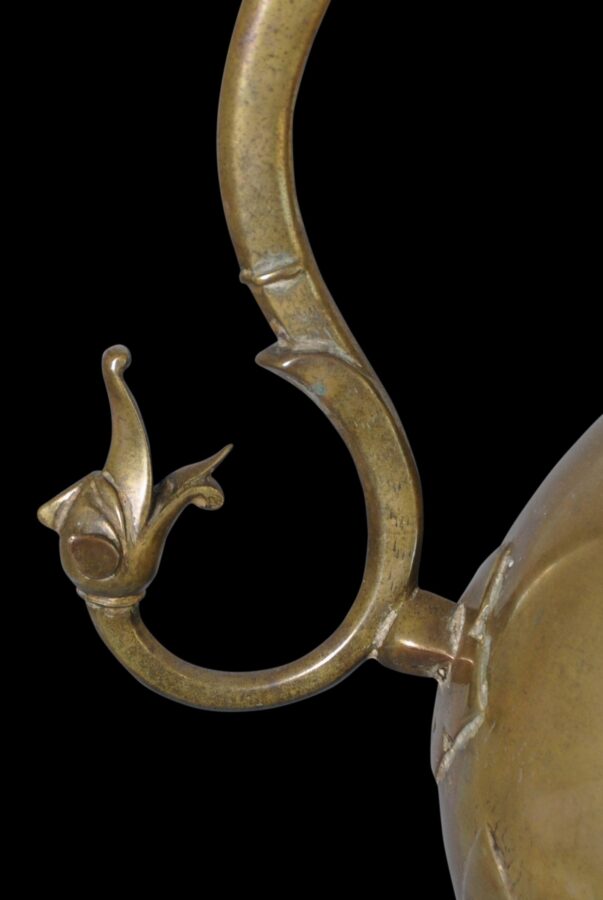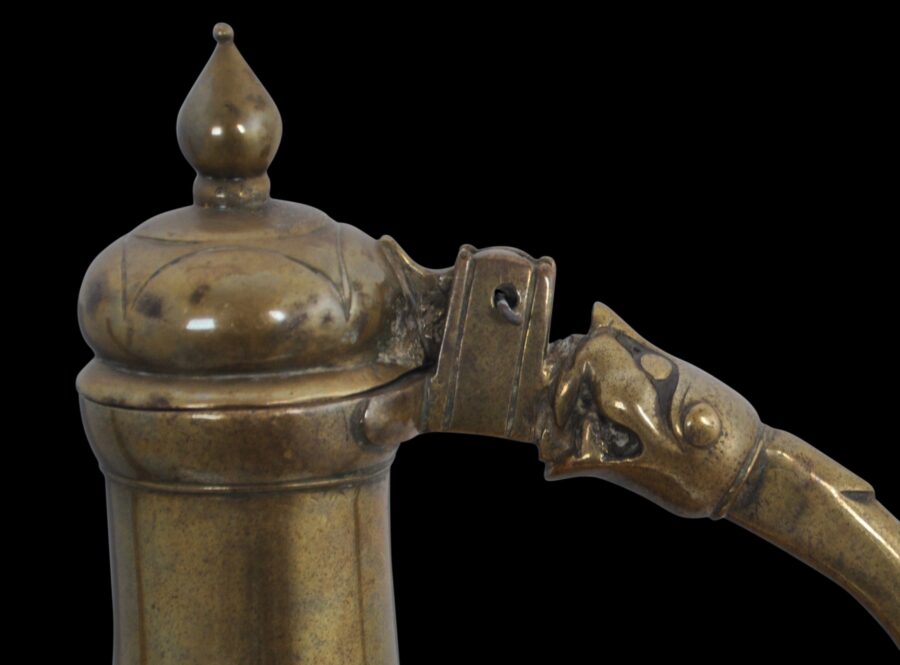Enquiry about object: 9114
Unusually Massive Mughal Brass Ewer (Aftaba)
North India 17th-18th century
height: 36.5cm, length (from spout to handle): approximately 38cm, weight: 4,426g
This fine brass ewer or kettle (aftaba) is well made and follows conventional form – but it is among the largest of these that we have encountered.
It has a prominent spout. It retains its original lid which has a tall, bud-like finial. An ‘S’ shaped handle has a stylised lion head at the upper end, and terminates with a finely cast yali head at the other. The vessel stands on four short, flared feet.
The flattened, globular pear or tear shaped body tapers to a long neck. The body has been cast with raised cloud or foliage-like borders to the top and bottom. Remnants of trellis-like patterning engraved over the body can be seen, but this has mostly been worn smooth by use.
Ewers of this type have their origins in Persia and the Middle East. Typical Islamic ewers comprised a central chamber to which a spout, foot, handle and neck were attached. They permitted water to flow – Koranic injunctions deemed flowing water to be ‘clean’. Ewers were introduced to India by Muslim invaders during the late thirteenth and early fourteenth centuries. Thereafter their designs were Indianised – the ewers became more curvaceous and many were decorated with lush plant and floral motifs.
In India, local Muslims used such vessels for handwashing. They became a practical tool of hospitality, being used to welcome visitors by pouring scented water over the hands and feet and into a basin, and took on a great variety of shapes and types whilst adhering to the basic ewer form. It is likely that this example was kept in a niche close to the entrance of a vast house and was used by servants to pour scented water over the hands of visitors on their arrival.
This example is in excellent condition. There are no repairs, splits or dents. as mentioned, the lid is original – these are missing or replaced in many extant examples. Overall, this is a fine, decorative object with a strong presence. It has a great deal of wear suggesting that it is older than many extant examples. It is also, as mentioned, among the largest examples we have seen.
References
Zebrowski, M., Gold, Silver & Bronze from Mughal India, Alexandria Press, 1997.


